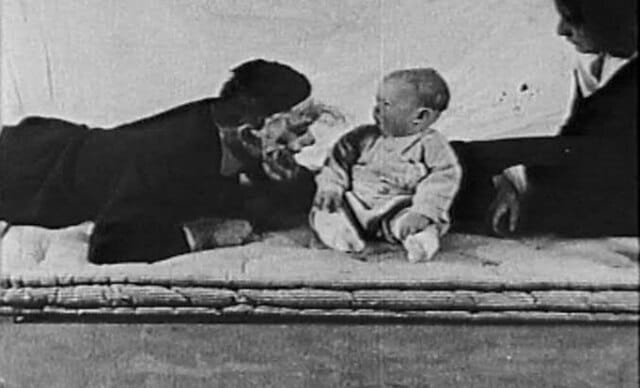The Little Albert Experiment

The Little Albert experiment was a famous psychology experiment conducted by John B. Watson and graduate student Rosalie Rayner, in the mid-20th century. Inspired by Russian physiologist Ivan Pavlov, who conducted experiments demonstrating the conditioning process in dogs, Watson wanted to take the research a step further by demonstrating that emotional reactions could be classically conditioned in people.
What is Classical Conditioning?
The Little Albert Experiment is a typical example of how classical conditioning can be used to condition emotional responses. The concept of classical conditioning was discovered by Russian physiologist Ivan Pavlov and is considered a type of unconscious or automatic learning that creates a conditioned response through associations between an unconditioned stimulus and a neutral stimulus.
An unconditioned stimulus is a stimulus that leads to an automatic or involuntary response. An example of this is flinching when someone throws a ball at you. A neutral stimulus is a stimulus that does not initially trigger an automatic response. An example of this could be a sound, perhaps the sound of a dog barking outside. As it has no initial effect on behaviour, it is considered to be a neutral stimulus. A conditioned stimulus is a stimulus that was once neutral, however, one that now leads to a response. For example, if you previously did not pay attention to bees, but then got stung by one, and now you feel fear every time you see a bee, the bee has become a conditioned stimulus. An unconditioned response is a response that occurs without thought. If you start shivering when you feel a cold gust of wind, the shivering is an unconditioned response. A conditioned response is a learned response or one that is created where no response existed before. For example, the fear you experience after being stung by a bee is a conditioned response.
Pavlov's experiment with dogs is one of the best-known examples of classical conditioning. Pavlov paired the sound of a bell with the presentation of food to trigger a conditioned response, salivation, in dogs. By associating the neutral stimulus (the sound of the bell) with the unconditioned stimulus (food), the sound of the bell alone could produce a salivation response, even when no food was presented.
The concept of classical conditioning had an immense impact on the school of thought in psychology referred to as behaviourism. Behaviourism is the assumption that all learning occurs through interactions with the environment. In other words, it is the environment that shapes one's behaviour.
The Five Key Principles of Classical Conditioning
There are five key principles of classical conditioning which behaviourists have used to describe several different phenomena associated with conditioning.
First, there is acquisition, which is generally described as the initial stage of learning. This is when a response is first introduced and then gradually strengthened. Repeated pairings or associations of the conditioned stimulus and the unconditioned stimulus will eventually lead to acquisition. Soon, the previously neutral stimulus will evoke a response on its own.
Secondly, there is extinction, which refers to the decrease or disappearance of a conditioned response. This happens when a conditioned stimulus is no longer paired with an unconditioned stimulus.
Thirdly, there is spontaneous recovery, which refers to the reappearance of a learned response after a period of extinction. However, if the conditioned stimulus and unconditioned stimulus are no longer associated, extinction will return shortly after a spontaneous recovery.
The fourth principle is generalisation, which is the tendency for a conditioned response to exhibit itself in the presence of similar stimuli to that of the conditioned stimulus. For instance, a mother who is used to responding when she hears her child ask for help may also respond when she hears another child say "Mom."
The final principle is discrimination, which is the ability to differentiate between a conditioned stimulus and other stimuli that have not been associated with an unconditioned stimulus. Using the same example as before, the mother would exhibit discrimination by being able to differentiate her own child's voice from another child's voice.
The Little Albert Experiment
The results of The Little Albert Experiment were first published in the February 1920 issue of the Journal of Experimental Psychology. The experiment aimed to follow the principles of classical conditioning to condition an emotionally stable child to fear a distinct stimulus that would normally not be feared by a child, in this case, furry objects.
Prior to the experiment, nine-month-old Albert was chosen from a hospital to be the subject and was given a series of baseline emotional tests. During this period, he was briefly exposed to a white rat, a rabbit, a dog, a monkey, cotton, wool and other stimuli for the very first time. During the baseline tests, Albert showed no fear of any of these items.
The practical experiment began when Albert was eleven months old, he was placed on a mattress on a table in a room. A white laboratory rat was then introduced to him, and he was allowed to play with it. However, every time Albert would touch the rat, the experimenters would make a loud noise by striking a steel bar with a hammer behind his back. This action caused Albert to cry and become afraid.
The experimenters repeated this process several times until Albert started associating the rat with the loud noise, causing him to become distressed and crawl away upon being presented with only the rat. Thus, the rat, which was initially a neutral stimulus, became a conditioned stimulus that elicited an emotional response similar to the distress originally caused by the loud noise.
In subsequent tests, Little Albert appeared to apply his reaction to the white rat to other objects. He became agitated at the sight of various other furry items, such as a rabbit, a furry dog, a seal-skin coat, and even a Santa Claus mask with white cotton balls in the beard. However, Albert's generalised reaction did not extend to all hairy things.
Ethical Concerns
The Little Albert Experiment is considered to be significantly unethical. To start off, the researchers failed to decondition Albert to the stimuli he was conditioned to be afraid of, something that should have been done after the experiment. To add on, Albert was presumed to be born with hydrocephalus, a condition that can lead to brain damage. Despite being aware of this health condition, Watson continued the experiment. Some even speculate that Albert's health condition might have deteriorated faster by undergoing this stressful examination. Today, an experiment like this would not be approved by the Institutional Review Board, which protects the rights of human research subjects in studies. At the end of the day, the experiment caused a young child a lot of unnecessary discomfort and fear.
There are also some inherent flaws with the Little Albert Experiment. The experiment was supposed to test classical conditioning theories on humans, yet they only used one subject. This sole subject was an infant who was not even one year of age and who may have had brain damage at the time. Therefore this experiment only managed to prove that one white, male baby with hydrocephalus could be classically conditioned. The results should not be generalized across people of different ages, genders, races, disabilities, or other identities without more test subjects.
Moreover, the researchers did not clearly explain how they collected their data, which makes the experiment difficult to replicate. There are still photographs and videos of Little Albert's reaction to the stimuli, but one can assume that the researcher mostly relied on their subjective personal observations. Their interpretations of Little Albert's neutral and fearful reactions can be biased, so it is difficult to determine whether their data is reliable.
The baby behind John Watson's experiment has now been identified as Douglas Merritte, the son of a wetnurse named Arvilla Merritte who lived and worked at a pediatric hospital on campus at the time of the experiment, she received one dollar for her baby's participation. Watson did not see any reason to reveal Albert's true identity, nor did he ever make any attempts to de-condition the child, as he was under the impression that Albert's negative reactions to furry items would soon subside.
The story unfortunately does not have a happy ending. Douglas passed away at the age of six on May 10, 1925, due to hydrocephalus, a condition he had been born with that caused a buildup of fluid in his brain.



